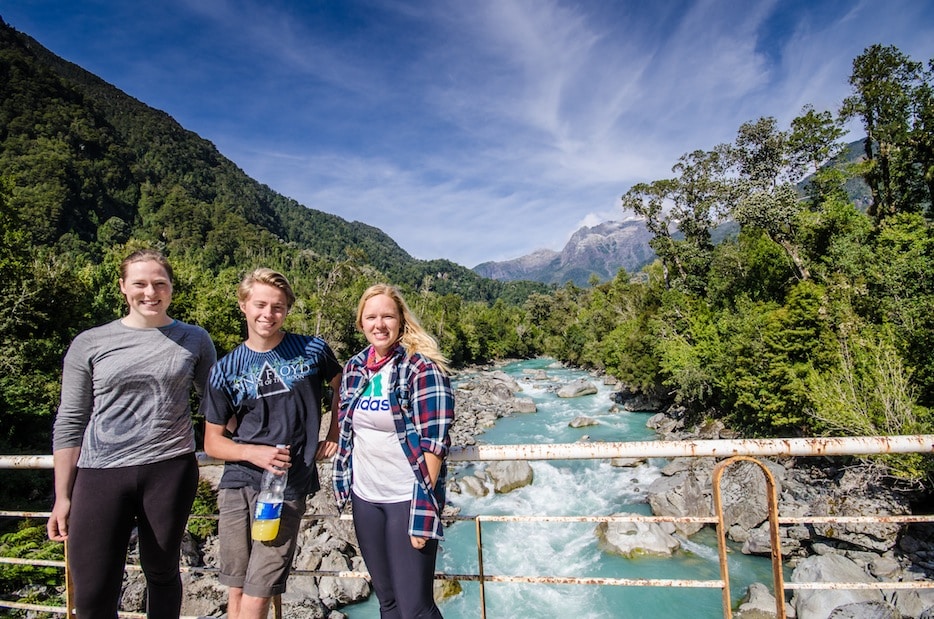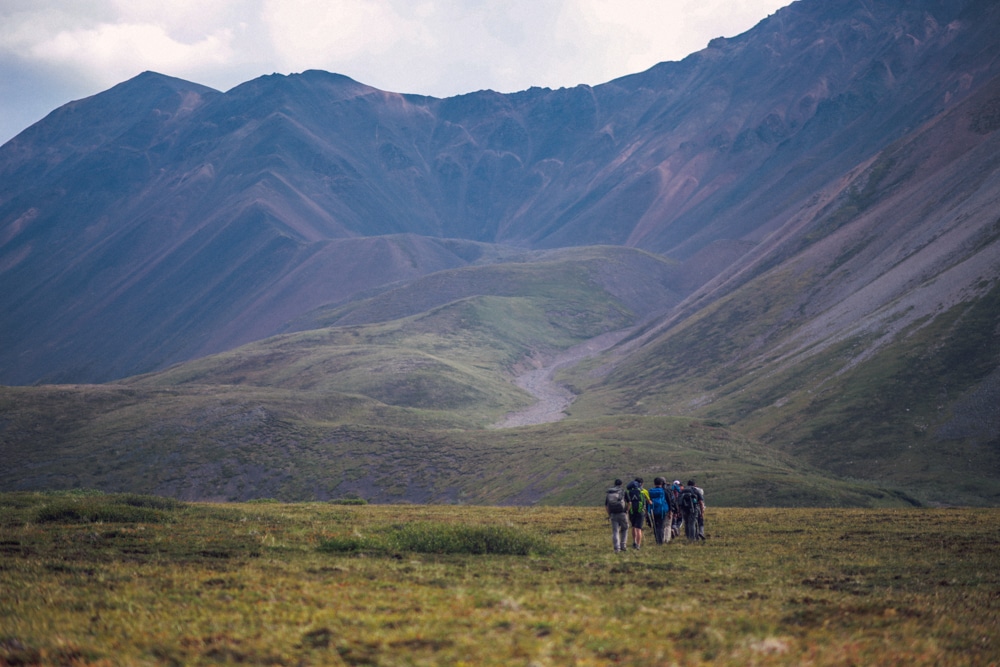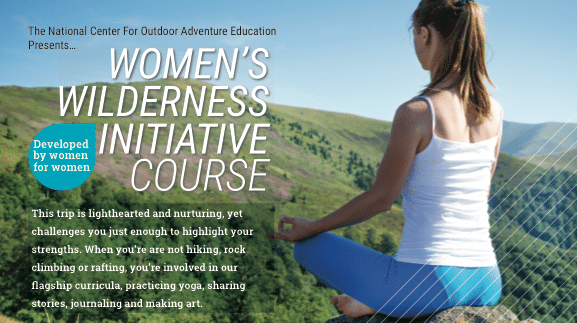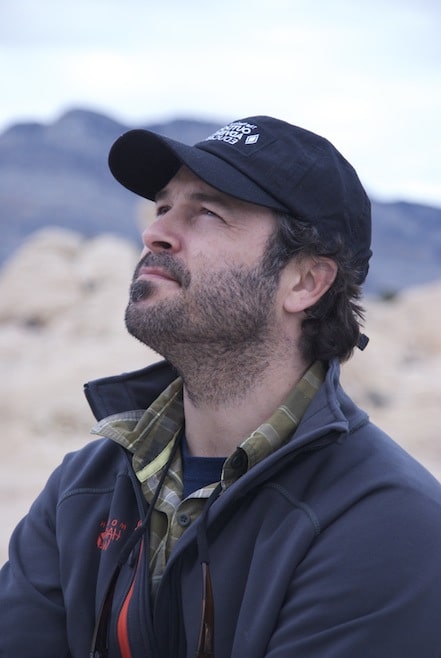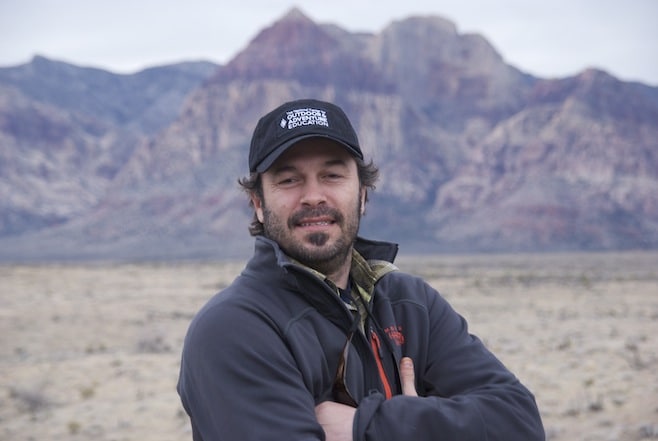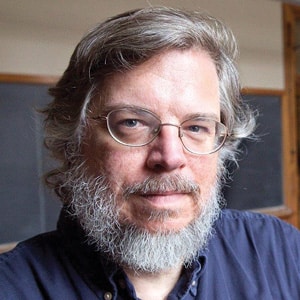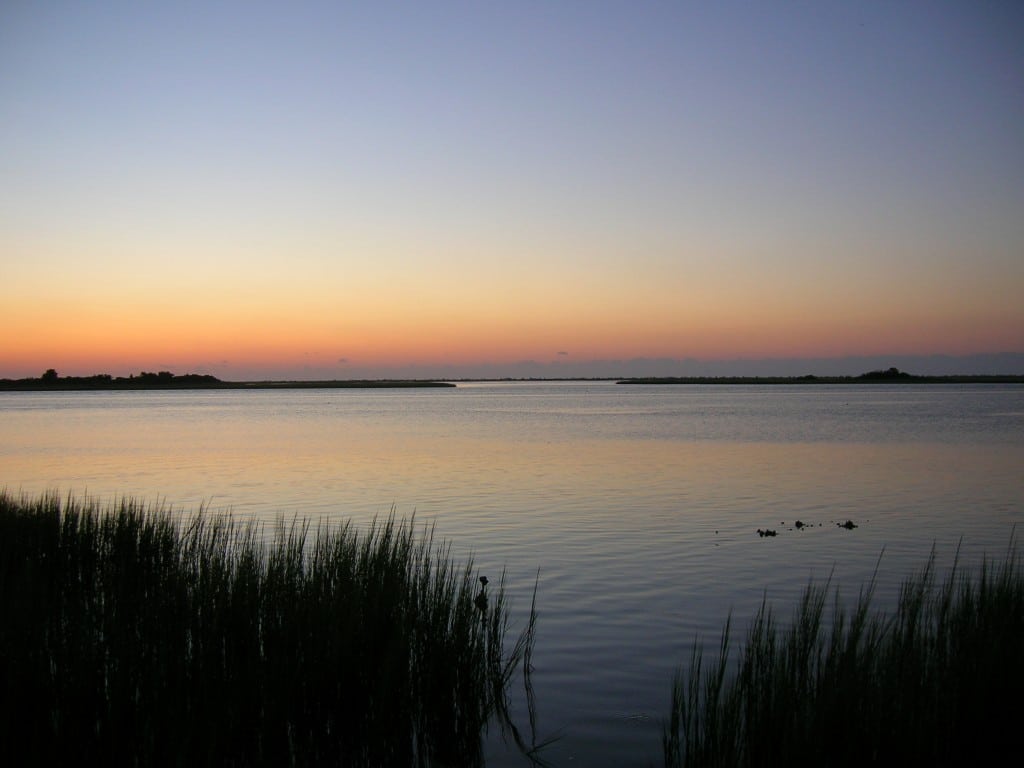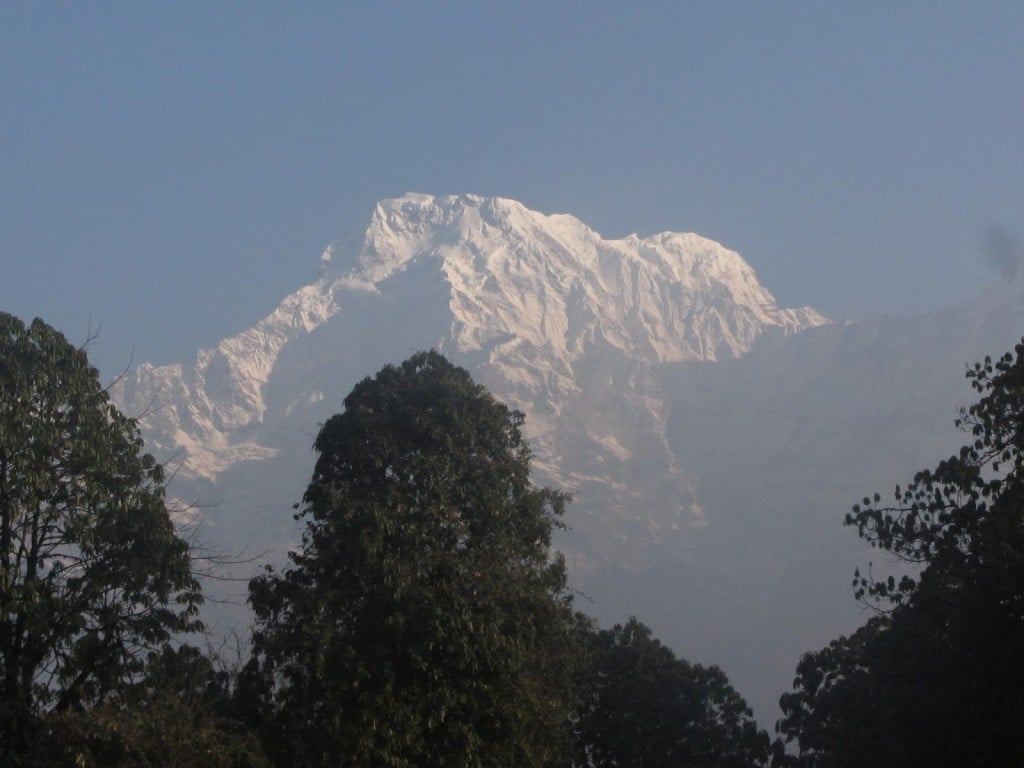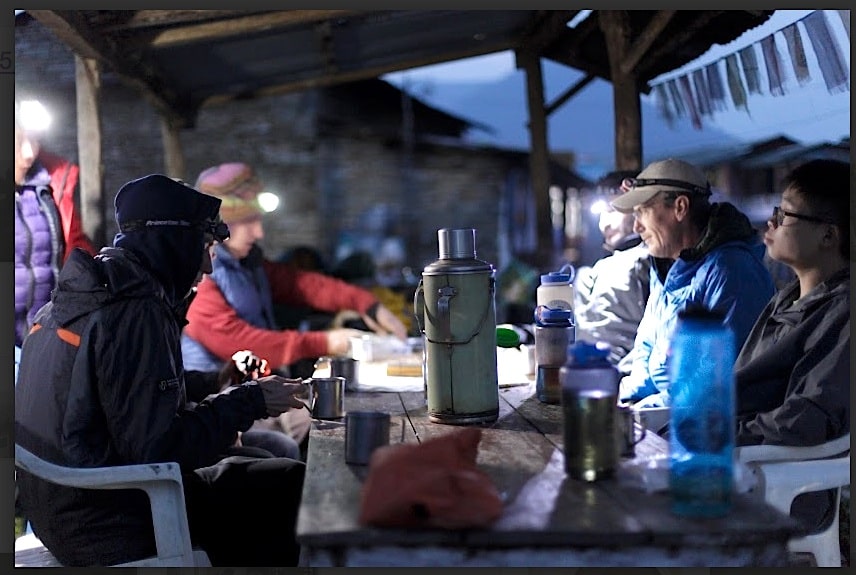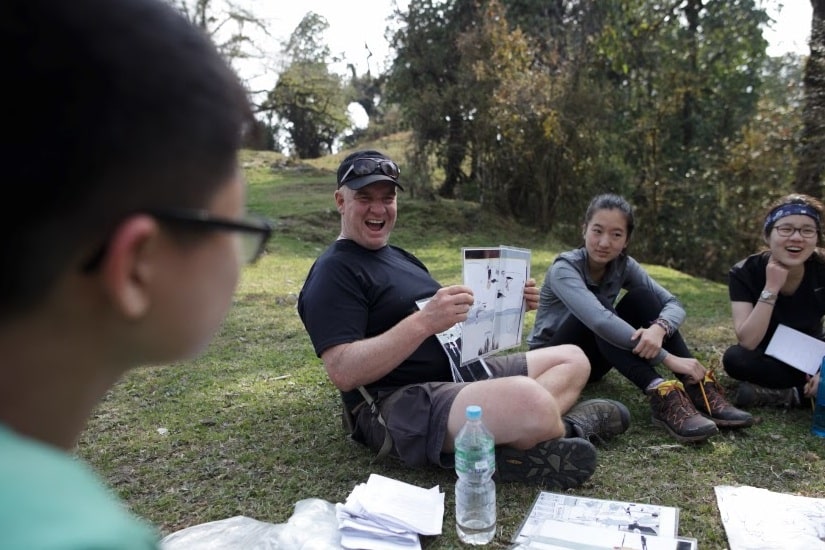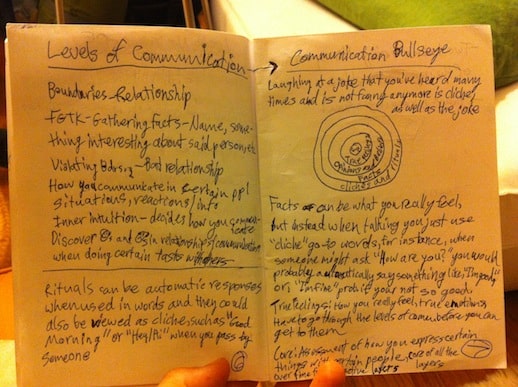NCOAE Blog
A Tip of Our Cap to the Wilderness Medical Society
Staff Profiles One thing we don’t do here at The National Center for Outdoor & Adventure Education is work within a vacuum. We depend heavily upon many organizations that went before us or that help us realize our mission and full potential.
One thing we don’t do here at The National Center for Outdoor & Adventure Education is work within a vacuum. We depend heavily upon many organizations that went before us or that help us realize our mission and full potential.
Today, we’d like to shine the light on one of those groups that works behind the scenes to ensure that our efforts in outdoor education, adventure travel and backcountry guiding continue to benefit from standards that keep us and our clients safe and sound in the wilderness.
Specifically, we’d like to tell you briefly about the Wilderness Medical Society (WMS), which was formed in 1983 by three California physicians — Drs. Paul Auerbach, Ed Geehr and Ken Kizer — who integrated the sound principles of medical practice within a wilderness setting.
The specific purpose of the Wilderness Medical Society was to encourage, foster, support, and conduct activities or programs concerned with life sciences, which may improve the scientific knowledge of the membership and the general public in matters related to wilderness environments and human activities in these environments.
As envisioned by these three physicians, WMS evolved into the world’s leading organization devoted to wilderness medical challenges. What challenges? These include wild animal attacks, wilderness trauma, expedition and disaster medicine, dive medicine, search and rescue, altitude illness, and weather-related illnesses.
This society explores health risks and (more…)
Spend Thanksgiving in Patagonia With NCOAE’s 31-Day Outdoor Educator Training
Training & CertificationsWhat are your plans for Thanksgiving? Here at The National Center for Outdoor & Adventure Education, we’re expanding our outdoor educator-training program on a global scale and announcing a month-long training expedition that culminates in a Thanksgiving celebration in Patagonia — a remote region at the southernmost end of South America that is shared by Argentina and Chile.
That’s a large leap from our outdoor educator training programs in North Carolina on the Eastern seaboard and Oregon and California out West. But we’re excited to be spreading our wings, and we’re even going a step further by planning a second overseas training expedition next spring — this time to Kenya for a 33-Day Outdoor Educator Instructor Training – East Africa.
But first, back to our Patagonia training. The 31-Day Outdoor Educator Instructor Training – Patagonia is co-ed and targets college students, classroom teachers and novice outdoor educators who are 18 years and older. Tuition is just $6,600. We fly from Houston, Tex., and land in Santiago, Chile, where our local team has already worked out an invigorating itinerary.
Chile is a land of extremes, from the snow-capped volcanoes of Patagonia and dizzying heights of the Andes, to the driest desert on earth and the extensive southern glacial fields. We’ll be exploring some of the most beautiful mountains and rivers in the world, and we’ll see it with fellow explorers who have the same enthusiasm and zeal for the outdoors and education that you do.
And when it comes to gaining the experience and knowledge to become an outdoor educator, there are few better “classrooms” than Patagonia and the (more…)
Students From China, Korea, and the USA Team up to Challenge Alaskan Wilderness
Teen CoursesTwo National Center for Outdoor & Adventure Education (NCOAE) instructors recently guided an international group of high school students on a 16-day custom outdoor education program in the Alaskan wilderness.
The teens, all of whom were enrolled in a youth leadership program in South Korea, got their first introduction to Alaska’s glaciers, jagged mountain ranges, coastal islands and mudflats as their flights neared the airport for Day One of their adventure. Stepping off the plane, the teens immediately grabbed their backpacks and headed out toward uninhabited remote wilderness.
NCOAE course director and lead field instructor Matt Seats said the students had mentally prepared themselves for 10 days of backpacking, route finding and living in the wild. Following a week of wilderness medicine training and some basic training in how to live and travel safely in the wilderness, the group was ready to start their adventure.
Though each of them had their own set of apprehensions, the students arrived at one of their first destinations by foot hours sooner than expected, which prompted these novice explorers to literally dance, jumping and shouting at the top of their lungs in joy about their accomplishment.
That evening they enjoyed the hypnotic effects of a sweetly scented campfire, fueled by the steady Alaskan wind in a dry riverbed. For some of these teens, it was the first campfire they had ever built.
The backdrop for this adventure — Wrangell-St. Elias National Park — is the least visited national park in the United States, and it’s where our group of teen adventurers found themselves 10 miles into the (more…)
Dates Announced For 2015 North Carolina Women’s Wilderness Initiative
Adult CoursesIf you believe being in the backcountry allows for a freedom that can’t be found anywhere else, or that backpacking and river rafting by their very nature sets a subtle but intentional pace that’s good for your soul, then our September 7-13, 2015, Women’s Wilderness Initiative course in North Carolina is tailor-made for you and what you stand for.
The National Center for Outdoor & Adventure Education’s Women’s Wilderness Initiative is a one-of-a-kind backcountry experience enabling women of nearly all ages to ditch a spouse, kids, job and/or college coursework for seven days focused just on themselves. That’s because your role on a Women’s Wilderness Initiative course is to unwind from your day-to-day tasks, focus on setting personal objectives, develop new technical and leadership skills, and have fun in the Great Outdoors with a group of like-minded women.
By the time you show up for our North Carolina Women’s Wilderness Initiative course, we’ve handled all of your logistics. You food is purchased, meals are prepped, the van is gassed, and the route is already vetted and selected.
Feel a little intimidated by the thought of hiking in unfamiliar territory or navigating rapids along the French Broad River? Not to worry. Our North Carolina Women’s Wilderness Initiative is perfect for women who are not regular rafters and backpackers. The trails we navigate are mostly flat and the river is easy to navigate.
Our all-women team of certified instructors wants you to walk away from this trip with a (more…)
Vertex Rail Corp Provides NCOAE With Funding and Volunteer Support
Education Without Walls If you follow us on Facebook, you may have read about a Community Outreach grant we recently received from the Vertex Railcar Corporation — a startup that’s focused on building the next generation of safe rail tank cars. Vertex and The National Center for Outdoor & Adventure Education’s (NCOAE) are neighbors here in Wilmington, N.C. When Vertex learned about the work we do through our Educational Without Walls (EWW) program (namely, offering young people living at or below the poverty line the opportunity to participate in structured monthly outdoor adventures and expeditions), they were intrigued.
If you follow us on Facebook, you may have read about a Community Outreach grant we recently received from the Vertex Railcar Corporation — a startup that’s focused on building the next generation of safe rail tank cars. Vertex and The National Center for Outdoor & Adventure Education’s (NCOAE) are neighbors here in Wilmington, N.C. When Vertex learned about the work we do through our Educational Without Walls (EWW) program (namely, offering young people living at or below the poverty line the opportunity to participate in structured monthly outdoor adventures and expeditions), they were intrigued.
After meeting with our executive team in person here at NCOAE headquarters and asking how they could help, we received a $15,000 grant from Vertex to further expand the EWW offering between now and the end of 2015.
While we were blow away by Vertex’s support of our local youth, what happened next impressed us even more.
Vertex Outreach Services strongly support the efforts and work of the organizations it supports, including NCOAE. While they’re among the first to stand up and applaud the outstanding services we provide to our local youth, they’re also the type of corporation that walks its talk.
See the people in the image above? Those are just some of the Vertex Railcar Corp employees who generously volunteered their time earlier this month to help us with a little sprucing-up project that we hosted here at NCOAE World Headquarters in Wilmington. All on their own, Vertex Outreach Services asked how else, aside from funding scholarships to send students on EWW courses, they could (more…)
Zac Adair and Seeing the Backcountry Through a Soda Straw
Staff ProfilesIt’s been a while since Zac Adair and his wife, Celine, co-founded The National Center for Outdoor & Adventure Education (NCOAE), and while it would be nice to think they jumped into this challenging not-for-profit enterprise with eyes wide open, that wouldn’t be completely accurate.
Yes, going into it they had a great game plan. They had previously founded and run two other outdoor education organizations — a not-for-profit named Panacea Adventures, and the Adventure Education Institute (AEI) — which they merged to create NCOAE. But these North Carolina-based outdoor educators — raising their infant child — were working under a disadvantage that certainly couldn’t be ignored in the planning stages of NCOAE. And while some would consider it a major hurdle to their career plans, Zac and Celine saw it more as a nuisance.
So much so, in fact, that they haven’t felt it necessary to bring up the fact that Zac — a veteran surfer, rock climber, whitewater river guide and outdoors program business manager — lost the majority of his vision when he was struck on his bicycle by an automobile back in 2003.
And now, more than a dozen years later, he has less than 2 percent vision left (in just one eye) and he describes that vision through his good eye as, “seeing the world through a soda straw.”
The accident happened in Nags Head, N.C., in the late summer of 2003 while Zac was riding home on his bicycle after a session in the surfline. He was struck by a taxi traveling at 59 miles per hour. Zac was on life support for a full week. His cervical spine was broken in four places, his right leg was broken, he suffered severe right scapula damage, and as a result of the trauma, a year later he lost 98 percent of his vision in one eye, and 100 percent of his vision in his other eye.
Not many people — even those closely associated with NCOAE — are aware of Zac’s blindness, nor is it something the couple really cares to have bandied about. In fact, few of the course and training participants who meet Zac at NCOAE headquarters in Wilmington prior to departing for a local trip have any notion that our co-founder is legally blind.
(more…)How To Help Provide Outdoor Experiences for Youth in Need
About NCOAEAt first glance, our website might lead the casual observer to surmise that our organization, The National Center for Outdoor & Adventure Education (NCOAE), is just another run-of-the-mill for-profit business. The kind of outfit where the owners get rich by running adventure-based trips for children from well-to-do families to exotic destinations around the globe. Truth is, nothing could be further from the truth.
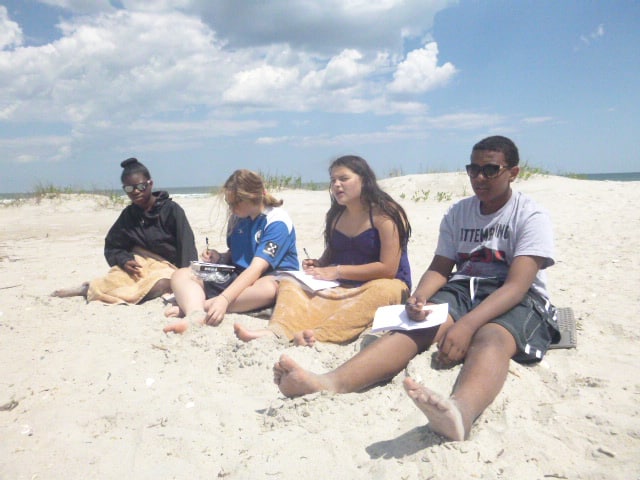
While we welcome anyone — regardless of their socioeconomic standing or means — to enroll in our courses, we take great pride in making all of those courses affordable and accessible to those without means. Oh, and we might add at this juncture that we’re a not-for-profit organization. Which means we rely just as much on individual and foundation giving as we do on fees paid out of our participants’ wallets and pocketbooks.
Why are going to such lengths to point this out? Robert Balfanz, Ph.D., a research professor at the Center for the Social Organization of Schools at Johns Hopkins University School of Education, said it best when he wrote:
“Poverty is a bear. Its impact on students is both obvious and subtle. The effects of food scarcity, housing instability, and insufficient access to medical and dental care are clear. Poverty also brings an increased exposure to violence, which further shapes student behavior directly and indirectly in complicated and often counter-productive ways. Another characteristic of poverty is living under constant stress, which research is beginning to show has a wide range of negative cognitive, physical, emotional, and mental health effects.”
The students who qualify for NCOAE scholarships often have not lived easy lives. A majority of these kids don’t have the luxury of living with both parents in the home. In many cases, if they’re living with even one biological parent, they’re considered the lucky ones. Some of the students who participate in our courses and programs live with a grandparent or an older sibling or are in the care of foster parents. (more…)
Three-day Paddle Out to Masonboro Island is this Weekend
Education Without WallsSome lucky eighth- and ninth-graders are heading out for a three-day expedition to the remote and undeveloped Masonboro Island near Myrtle Grove, N.C., this weekend, joined by a pair of instructors and a course director from here at The National Center for Outdoor & Adventure Education.
The eight youngsters are from the Wilmington, N.C., area and are participating in a custom program we’re running for New Hanover County schools called — appropriately — Education Without Walls.
Jena Honeyman and Wes Hawkins are the NCOAE lead instructors for this course, and she will be assisted by course director Joshua Youse.
After spending the night in cabins at NCOAE’s headquarters, the group heads out to Myrtle Grove where they’ll get a quick course in kayaking 101 and a safety briefing before paddling to Masonboro Island. There, the group will quickly set up camp, eat lunch and participate in its first Ed Group meeting, followed by free time.
And by free time, we mean (more…)
An NCOAE Instructor Reflects on a Trek Among the People and Summits of Nepal
Custom ProgramsEditor’s Note: Stephen Mullaney, NCOAE’s lead instructor, recently returned from our first-ever program abroad — an expedition to the Federal Democratic Republic of Nepal. Stephen led a group of South Korean high school teens on a six-day expedition through portions of this mystical and spiritual country. Below are his reflections on what he describes as a triumphant adventure trek.
It’s five in the morning and students participating in The National Center for Outdoor & Adventure Education’s (NCOAE) first-ever international expedition are all still asleep in their tents. I sit on the trail in the village of Pothana and look toward the horizon. A local villager named Chimay is blowing incense my direction — to bring me luck, he says.
Off in the distance, what first appears to my sleepy eyes to be clouds reveals itself for what it truly is: a vast stretch of snow fields and rock. Time to retrain my brain and the way I see the sky. My eyes follow the snowfields up, up through the clouds, to what seems like an absurd height, finally resting on the summit itself.
Machapuchare — “the Fish Tail” as it is interpreted in English — is a sacred mountain honoring Shiva (one of the main deities of Hinduism). The mountain is off limits to climbers and only one known attempt was ever made to summit its massive peak. Those climbers (three of them in 1957) stopped just five hundred feet from the summit, not because they couldn’t go on, but out of respect for the local culture and beliefs of the native people.
Viewing Machapuchare is how I kick off my first day on the trail for NCOAE in Nepal. A holy mountain that is pristine, respected and an earthen barrier that turns back explorers out of respect and sensitivity — not fear. Details about the mountain were provided to me by a local woman, a guide named Sita. She saw me drawing a picture of the mountain in my journal and volunteered to share its history with me.
We are in Nepal where I am teaching students to be (more…)
The National Center for Outdoor & Adventure Education Goes to Nepal
About NCOAEMonths of planning and organizing have brought success! We recently completed our first program abroad — an expedition to the Federal Democratic Republic of Nepal with a group of South Korean high school teens.
South Korea-based Apex Global Leadership Center (AGLC) joined with us for this adventure-based spring break program that emphasized leadership education. Traveling in the Annapurna region of Nepalthe adventure included our very own Stephen Mullaney as lead instructor, Matt Seats as course director and assistant instructor, and Matt Evans, an assistant instructor who joined as expedition videographer. Sean Hill, founder of Apex, also participated and instructed. This NCOAE custom program delivered beginner-level leadership and outdoor technical skills training with world-class views and cultural sharing.
The students and our instructors flew in from around the globe and met in Kathmandu, where they were driven to a teahouse just in time for dinner. After a night of shopping the Kathmandu markets for backpacking food and breakfast the next morning, the team went back to the airport and on to Pokhara four hours to the north and west. Following a late lunch at a lakeside guesthouse, the students (more…)
High School Credit Now Available for All NCOAE Teen Adventures
Teen Courses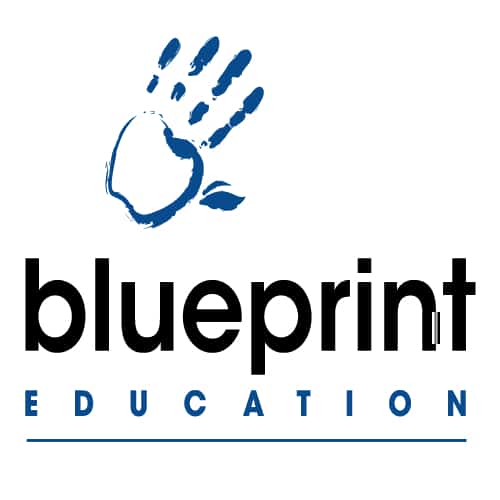 We here at The National Center for Outdoor & Adventure Education are starting off the summer with some truly great news. Beginning in June, we’ll be offering students who successfully participate in any of our Teen Adventure courses the opportunity to earn high school credit.
We here at The National Center for Outdoor & Adventure Education are starting off the summer with some truly great news. Beginning in June, we’ll be offering students who successfully participate in any of our Teen Adventure courses the opportunity to earn high school credit.
This most excellent announcement is the result of the NCOAE curriculum having just now receiving the seal of approval from Blueprint Education — a private nonprofit accrediting body.
Founded in 1969, Blueprint is an accredited distance learning school for grades 7 through 12 with the primary mission of inspiring students to make better choices and to be champions of their own learning. Blueprint itself is accredited by AdvancED, the unified organization of the North Central Association Commission on Accreditation & School Improvement (NCA CASI), and the Southern Association of Colleges and Schools’ Council on Accreditation and School Improvement (SACS CASI).
And as a result of this latest announcement, all NCOAE Teen Adventures are eligible for qualifying high school credit from Blueprint Education. Each and every one of these credits are elective and available in the following categories:
- Physical Education: For having learned about and shown proficiency in mountaineering, rafting, kayaking, rock climbing, surfing, stand up paddle boarding, alpine, or backpacking activities during an NCOAE Teen Adventure course
- Outdoor Leadership: For having learned about and shown proficiency in interpersonal development, small group dynamics, critical thinking, decision making, and more during an NCOAE Teen Adventure course.
- Environmental Studies: For having learned about and shown proficiency in water conservation, astronomy, environmental sustainability sustainability, Leave No Trace (LNT), cycle of rain clouds, oceanography and more during an NCOAE Teen Adventure course.
Students can earn .5 or 1.0 Carnegie Units (credit hours) for each topic depending on how many hours were put into teaching each one. Our staff has its pencils out, doing the math on how hours will be taught for each class and how that matches up with state and national standards. (more…)
NCOAE Is Headed To Nepal
About NCOAE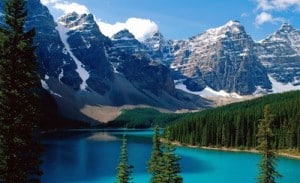
(Image courtesy of Apex Global Leadership Center)
You know us as The National Center for Outdoor & Adventure Education (NCOAE), but after today’s news, we may need to change “National” to “International”. That’s because we just booked our first overseas program — a March 2015 custom outdoor education expedition in the Federal Democratic Republic of Nepal.
Sure, we’re still offering courses like our Alaska Teen Adventure (for grades 10-12), California Youth Adventure (for grades 8-9), and the always popular North Carolina Teen Adventure (for grades 10-12), but thanks to the extraordinary efforts of the good folks at Apex Global Leadership Center, NCOAE will be facilitating a spring break leadership program for South Korean teenagers traveling in the Annapurna region of Nepal.
If you’re unfamiliar with them, Apex is a Seoul, South Korea-based outdoor and adventure leadership program, and when their founder, Sean Hill — a Wharton School of Business graduate living and working in South Korea — contacted us last summer about running a trip in Nepal, we jumped at the opportunity. After seven months of planning and working out a myriad of details, we’re happy to report that our team will be (more…)
Everything You Need To Know About Choosing Women’s Outdoor Gear
Campfire Conversations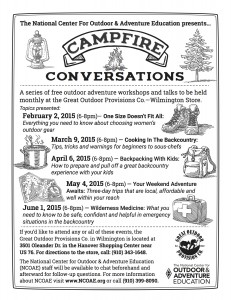 There was a time, not so long ago, that when it came out outdoor recreation gear, apparel and accessories, women were told one size fits all. “You there, young lady! I understand you need a backpack for a serious wilderness expedition? No problem. See that one over there that Jonathan is trying on? That’s the one for you!”
There was a time, not so long ago, that when it came out outdoor recreation gear, apparel and accessories, women were told one size fits all. “You there, young lady! I understand you need a backpack for a serious wilderness expedition? No problem. See that one over there that Jonathan is trying on? That’s the one for you!”
Suffice to say, the manufacturers of outdoor gear, apparel and accessories haven’t always greeted women interested in backcountry travel with open arms. Oh how times have changed, and for the better!
Celine Adair, co-founder and director of operations here at The National Center for Outdoor and Adventure Education (NCOAE), will address the specific clothing and gear requirements for women who prefer their hikes to be more vertical in nature than horizontal and don’t think the term “roughing it” means room service is going to be late.
Celine, along with NCOAE instructor Jena Honeyman, will be speaking on the topic from 6 to 8 p.m. Monday at the Great Outdoor Provisions Co. store in Wilmington, N.C. (The store is located at 3501 Oleander Drive — at the Hanover Center Shopping Mall — and the talk is free and open to the public.)
Outdoor clothing and equipment manufacturers didn’t truly recognize the potential for women’s wilderness equipment and accessories until about a decade ago. It’s not that they didn’t know there’s a difference between men and women. It was more the case of “one size fits all” when it comes to outdoor gear.
Wrong thinking, of course, but now that the (more…)
Wilderness Medicine Training in North Carolina
Wilderness Medicine Training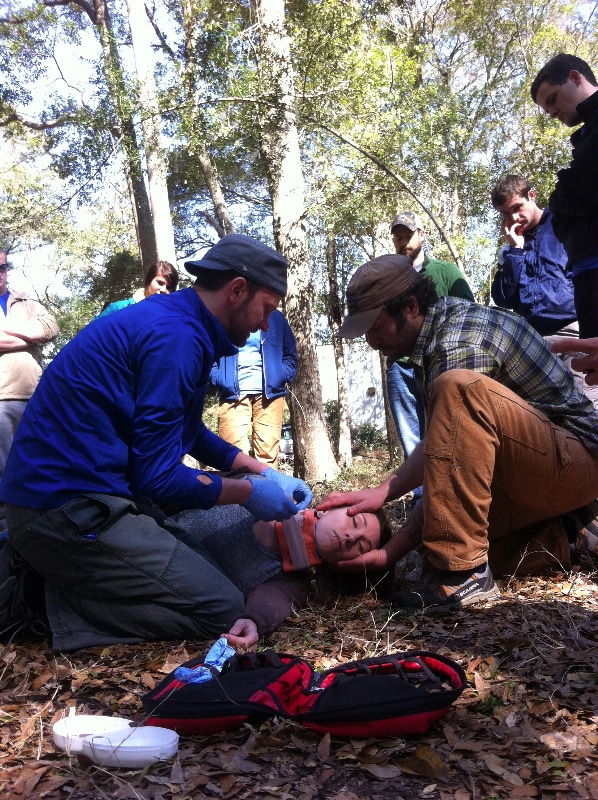 Working in remote settings has its challenges. From the lack of a quality connection to the Internet and having to find alternate ways to ‘go to the bathroom,’ to not being able to find a doctor precisely when you may need one, working remotely takes on all new meaning when you’re outdoor educator or backcountry wilderness guide. And while there’s nothing we can do for you here at the National Center for Outdoor & Adventure Education (NCOAE) about the Internet connectivity issue, we sure as heck can train and prepare you or your staff for medical emergencies that happen five or 500 miles away from the nearest hospital.
Working in remote settings has its challenges. From the lack of a quality connection to the Internet and having to find alternate ways to ‘go to the bathroom,’ to not being able to find a doctor precisely when you may need one, working remotely takes on all new meaning when you’re outdoor educator or backcountry wilderness guide. And while there’s nothing we can do for you here at the National Center for Outdoor & Adventure Education (NCOAE) about the Internet connectivity issue, we sure as heck can train and prepare you or your staff for medical emergencies that happen five or 500 miles away from the nearest hospital.
If you take a moment to really think about it, the practice of wilderness medicine has been around a lot longer than anyone really knows. We venture to say that its existence predates 1,800 BC, when the Code of Hammurabi first set out fees for surgeons and punishments for malpractice. Since the very first opportunity to provide lifesaving care in a remote setting, wilderness medicine has been a thing.
Of course, no one on the battlefields of Elam’s Invasion into Mesopotamia ever yelled for a ‘wilderness’ medic. Regardless, “the advancement of wilderness medicine has been closely connected to military exploration/operations throughout history, and not surprisingly, this remains in many ways as true today as it was a thousand years ago,” wrote George W. Rodway in a paper titled The Foundations of Wilderness Medicine: Some Historical Features.
Fast forward to 2015, and NCOAE — through its affiliation with the Wilderness Medicine Training Center — has emerged as a leading provider of wilderness medicine training in North Carolina (and as a custom training provider, anywhere in the world). More to the point, we’re the only provider to offer a Hybrid Wilderness First Responder (WFR) training and a Hybrid Wilderness First Aid (WFA) training, all under one roof. What’s this ‘hybrid’ thing we’re referring to? Good question. Read on, grasshopper.
For people interested in receiving training and certification in the administration of wilderness medicine but can’t get away from home or work for weeks at a time to participate in such trainings, hybrid training allows you to (more…)
Environmentalist Extraordinaire Recalled in Magazine Eulogy
Outdoor Education News
(©2004 John Blaustein Photography http://www.johnblaustein.com)
For those of us who treasure the wilderness and want to preserve every pristine particle in it, the death late last month of Martin Litton was a bit jolting. Sure, he was 97 years old and certainly lived what eulogies often refer to as “a full life.”
And by that, we’re talking about a controversial outdoorsman who filled that life with stints as a LA Times reporter, WWII glider pilot, nature photographer, river runner, curmudgeonly conservationist and devout environmentalist.
By comparison, Martin Litton makes the equally grey-bearded “Most Interesting Man in the World” beer commercial character look like an Iowa accountant.
National Geographic contributor Kenneth Brower recently wrote a glowing description of Litton, an environmental pioneer who, as a sideline, founded his own dory fleet business, running rivers in boats of his own design. (Fun fact: Litton holds the record as the oldest man to row the Grand Canyon, which he did at the age of 87.)
Brower’s must-read piece for National Geographic waxes poetic on the accomplishments of this amazing man. Below are a few highlights:
- It was Litton who first understood the damage that a Marble Canyon Dam would inflict on Grand Canyon National Park.
- It was Litton who uncovered U.S. Forest Service mismanagement of the giant sequoias of California.
Our 2014 Thanksgiving Holiday Schedule
Life At NCOAE We here at the National Center for Outdoor and Adventure Education are closing up shop today — Wednesday — and again on Thanksgiving Day and Friday, but we’ll be open from at least 11 a.m. to 2 p.m. on Saturday and Sunday. Then it’s back to regular office hours on Monday — just in time to celebrate the first day of December.
We here at the National Center for Outdoor and Adventure Education are closing up shop today — Wednesday — and again on Thanksgiving Day and Friday, but we’ll be open from at least 11 a.m. to 2 p.m. on Saturday and Sunday. Then it’s back to regular office hours on Monday — just in time to celebrate the first day of December.
Like many outdoor education organizations are, we’re thankful for so much this year, including all of the wonderful students who have taken our courses, the great instructors we get to work with, and of course our amazing vendors and funders.
Most of all, we’re grateful for the dozens of absolutely beautiful places where we’ve guided and taught in the outdoors — all designated as Wilderness and all offering memories of great adventures.
Happy Thanksgiving!
Takeaways From The 2014 Wilderness Risk Management Conference
Conferences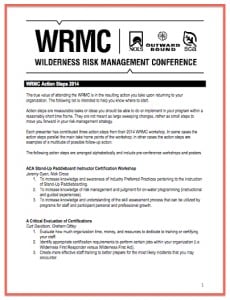 A rock fatally struck a National Outdoor Leadership School (NOLS) student on the head 25 years ago, and the subsequent rescue efforts — in darkness and stormy weather — later resulted in an active collaboration between NOLS, Outward Bound and other outdoor education organizations to take a closer look at their risk management and safety practices.
A rock fatally struck a National Outdoor Leadership School (NOLS) student on the head 25 years ago, and the subsequent rescue efforts — in darkness and stormy weather — later resulted in an active collaboration between NOLS, Outward Bound and other outdoor education organizations to take a closer look at their risk management and safety practices.
The student, 24-year-old David Black, was fatally injured when another climber dislodged a rock above him, hitting Black in the head. Black was one of three students and a NOLS leader who were descending Mt. Warren in Wyoming’s Wind River Range on a midsummer afternoon in 1989.
In a review following the incident, leaders from both NOLS and Outward Bound agreed that there were contradictory practices in place between the two organizations — guidelines that were supposed to provide protocol before, during and after such incidents occur in wilderness. Buoyed by Black’s family — which challenged NOLS to do something about the lack of communication between industry players on the topic of risk management — NOLS organized the Wilderness Risk Managers Committee. In addition to NOLS, the group consisted of leaders from Outward Bound, the Wilderness Medicine Society, Exum Mountain Guides, the Association for Experiential Education, the National Park Service, National Safety Network, American Alpine Club and The Outdoor Network.
A year later, the committee had outlined a list of concerns that could have an adverse impact on each organization. Among those topics were suggestions to tone down the risk of some outdoor adventures in order to ensure safety. The concerns also targeted a need for consistency when it came to gathering data following an incident in the wild, and the problems associated with reliance on tech gadgets that can remove self-sufficiency from the experiential education equation.
The committee also agreed that it was to remain a collaborative communications group rather than a rule-making body, and it set about a plan to host a larger gathering of outdoor professionals the following fall. What followed in September of 1994 was a gathering of nearly 200 outdoor education leaders, guides and other stakeholders in Washington State for the first-ever Wilderness Risk Management Conference (WRMC).
Much has been accomplished over the past two decades, with the fledgling forum developing into an international conference for outdoor education organizations of all scopes and sizes. These groups share the wilderness with others for the purpose of education, adventure, personal growth, leadership development and service learning. But specifically, the conference is a place for discussions about the risks that come with the rewards of a guided outdoor adventure.
And in each of the past 21 years, the WRMC has concentrated on risk management — including program administration, legal considerations, staff training and program practices. This annual risk-management revival has resulted in a better prepared and much more organized outdoor and experiential education industry.
This year’s Wilderness Risk Management Conference took place last month in Atlanta, Ga. For those of us who weren’t able to attend, the WRMC created a handy guide with key takeaways from each of the workshops presented over the three-day conference. Those takeaways appear below, and we encourage all of our industry peers to review what’s being recommended.
Presented below in alphabetical order, followed by the name of the workshop’s presenter(s) and the session’s key conclusions: (more…)
Recapping The Wildwood School’s Custom NCOAE Program
Custom ProgramsNothing makes us happier here at The National Center for Outdoor & Adventure Education (NCOAE) than meeting up with three busloads of seventh and eighth graders in a wilderness area and then teaching them about how to get along in an outdoor setting — in this case Joshua Tree National Park with its breathtaking sandstone rock formations monuments.
Last month, a group of our instructors from both the East and West Coasts participated in a three-day outing with 123 students from the famed Wildwood School in Los Angeles. These youngsters participated in what they and their teachers described afterwards as an incredible experience.

The Wildwood School and The National Center for Outdoor & Adventure Education in Joshua Tree National Park (October 2014).
Our co-founder and director of operations, Celine Adair, was there and said these “super smart Wildwood students,” joined 34 adults in setting up 52 tents in a base camp that became a theater of sorts, complete with two special sunsets, seven great meals, an orchestra performance by about a dozen coyotes each night, and topped off with a full-moon lunar eclipse with a few shooting stars tossed into the astronomical mix.
During the three-day outing, the Wildwood group participated in environmental studies, including learning the phases of the moon — very appropriate for the eclipse — local ecology and water use conservation.
They also broke up into smaller groups to learn about levels of communication, stages of relationships, and to discuss the best ways to identify and discuss feelings. Finally, they also learned outdoor skills, such as setting up a shelter, keeping warm, fire safety, hydration, hygiene and how to get found if lost.
Wildwood’s staff tells us they were (more…)
The Early-Camper Gets the Worm, According to Wilderness Study
Outdoor Education ResearchIt’s common knowledge that hanging around the outdoors, whether that be running bases on the baseball field or trekking in the backcountry — is nothing less than beneficial for you. There’s all that fresh air, exercise, a release from the stresses of everyday life — we could go on infinitum.
So now we have a new study that has scientists telling us there are additional pluses to participating in the wilderness-based activities, and these bennies can result in former sleepy heads who can’t seem to get up in the morning finding themselves leaping out of bed with a spring in their step and a song in their hearts.
According to a recent article in Current Biology, it appears that a large, consistent concentration of florescent lights in schools and the workplace, reading lamps at home, stadium floods and other artificial illumination sources, can really screw up your sleep pattern. And that doesn’t even account for the screen glow from computers, tablets and smartphones.
The study — albeit a small one — claims that an overabundance of artificial light at the wrong time can change sleep patterns and make us grumpy and sluggish in the mornings.
But a week in the wild, these scientists assert, synchronizes the body’s clock to become more attuned to the Sun and natural light sources, such as a candle or a campfire. In fact, sleep researchers maintain that by taking away artificial light, former night owls and other party animals who have a rough time hitting the deck in the morning, find themselves up and at ’em bright and early with more energy than ever before.
Kenneth P. Wright Jr., Ph.D., of the Department of Integrative Physiology at the University of Colorado in Boulder, says the brain’s “clock” lets us know when it’s time to hit the rack. However, unlike an alarm clock, this so-called circadian clock can be affected by artificial light sources, keeping you awake later at night and making it more difficult to get up in the morning.
Wright says that (more…)
Historic Outdoor Education Center Camp Waskowitz Gets a Major Facelift
Outdoor Education News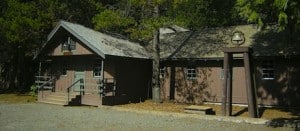 Earlier this month, 325 volunteers descended on Camp Waskowitz, a historic outdoor education center and former Civilian Conservation Corp (CCC) camp located south of Seattle, Wash.
Earlier this month, 325 volunteers descended on Camp Waskowitz, a historic outdoor education center and former Civilian Conservation Corp (CCC) camp located south of Seattle, Wash.
These volunteers — organized by NAIOP, the Commercial Real Estate Development Association — didn’t come empty handed. They carried ladders and saws and hammers and nails and paint buckets and brushes.
And in a matter of 10 hours, they completed 20 major projects at this 67-year-old complex — a task that would have taken the camp staff more than five years to accomplish on their own.
Roberta McFarland, the director of Camp Waskowitz, said she felt like the camp had won the lottery. She said the real estate association contacted her nine month ago and asked for a wish list of things that needed to be done. And she complied.
How’s this for a to-do list:
- Stain the cabins, council hall and lookout tower
- Relocate a large deck to the other side of the council hall
- Refurbish numerous benches and picnic tables
- Repair trails and install trail gates
- Install an ADA ramp to the nurse and staff building
- Construct a 150-square-foot greenhouse to grow tree seedlings
- Remove extensive, non-native, invasive plants
- Place 200 tons of crushed rock on walkways and parking lots
Built in 1935 as a temporary facility for the Depression-era Civilian Conservation Corp, the original buildings at Camp Waskowitz are still heavily used today. It is a state and national historic preservation site and one of only two (more…)
TALK TO US
Have any further questions about our courses, what you’ll learn, or what else to expect? Contact us, we’re here to help!
